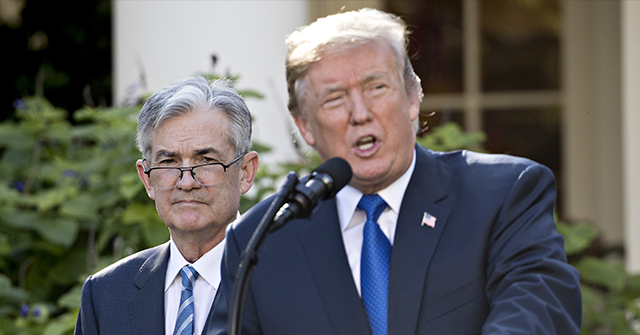The anticipated impact of President-elect Donald Trump’s proposed tariffs on the U.S. economy has become a topic of much debate, particularly concerning the Federal Reserve’s potential reaction. Critics warn that increasing tariffs could lead to inflation, curtail economic growth, or even push the economy into a recession, necessitating a response from the Fed in the form of raised interest rates. However, contrary to this perspective, there is no widely accepted economic model that supports the notion of tariffs being inherently inflationary. In fact, tariffs often function as a tax on importers, which subsequently reduces their income and could stifle inflationary pressures, presenting a more deflationary backdrop instead.
Moreover, tariffs are expected to bolster the value of the U.S. dollar against foreign currencies, further enhancing American purchasing power and, consequently, contributing to a deflationary environment. This trend was notably observed when tariffs were imposed on Chinese imports; the Chinese currency depreciated significantly, undermining the tariffs’ efficiency and allowing Chinese manufacturers to maintain their market position despite the additional costs. Critics argue that importers will transfer the costs of these tariffs onto consumers, potentially pushing consumer prices upward. However, any initial price increase due to tariffs is likely to be temporary and not classified as persistent inflation. It is reasonable to expect that in response to rising import prices, there could also be a downward adjustment in other prices, thereby minimizing the overall inflationary impact.
In terms of the Federal Reserve’s response to price increases linked to tariffs, it is unlikely that the Fed will instinctively hike interest rates. The Fed employs a more nuanced analytical approach to price fluctuations, probing into the origins of these changes to assess their potential permanence. This is illustrated by the Fed’s reaction during the inflationary spike at the beginning of the Biden administration, where policymakers judged the inflationary pressures to be transitory, largely a product of existing supply-chain issues. Regarding tariffs, the Fed is inclined to perceive any resulting price changes as isolated incidents rather than sustained inflationary trends, diminishing the need to counteract these fluctuations with rate increases.
Even when examining potential economic growth outcomes in the context of tariffs, the consensus seems to be that any detrimental impact on growth is mostly expected to stem from retaliatory measures by foreign governments rather than the tariffs alone. However, predicting these political repercussions is far beyond the capacity of pure economic analysis, making it difficult to ascertain the exact implications of U.S. tariffs on overall economic growth. It’s plausible that other nations may engage in limited retaliation but will quickly recognize the importance of maintaining access to the substantial U.S. market, thereby retracting heavier tariffs that could potentially lead to wider trade wars.
In the event that tariffs do exert a more pronounced drag on the U.S. economy than anticipated, there are mechanisms available to alleviate such pressure, such as tax reductions supported by revenue generated from the tariffs and an accommodating monetary policy stance from the Fed. The Federal Reserve’s dual mandate revolves around achieving price stability and maximizing employment, which means that if tariffs pose a threat to job growth, the Fed is likely to consider easing monetary policy rather than tightening it.
Ultimately, the notion that the Federal Reserve will react to tariffs through a tightening of monetary policy is fundamentally flawed. The prevailing outlook suggests that the Fed may not respond to such price pressures at all, with the chances of rate cuts being more plausible than rate hikes. As such, while tariffs may provoke immediate debates regarding their economic consequences, it appears that the Fed will maintain a measured stance, opting to assess any impacts from tariffs with a long-term perspective in mind rather than making abrupt adjustments in reaction to short-term fluctuations.

